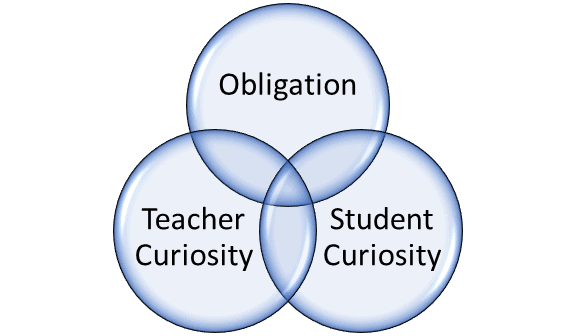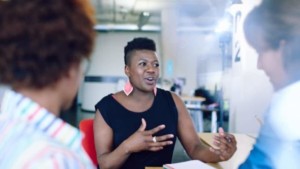Recalibrating Your Teacher Mindset

“What would I teach, and how would I teach, if my goal were to best prepare my students for life—the life they live today and the one they will live for all the time that follows school?”
Carol Ann Tomlinson poses this question in an Education Leadership article titled Mileposts of a Meaningful Life. For many educators, it has been a long time since we have considered what we teach. We spend an awful lot of time professionally thinking about how we teach and even why we teach, but what we teach may feel off-limits, predetermined, out of our hands.
With many states postponing or canceling state assessments and determining priorities for completing the school year, I decided to engage in a thought experiment with my own son, a first-grader now learning from home: what would I choose for my son to learn, honoring what I believe as an educator and a parent and what my son needs and wants to learn?
When I engaged in this thought experiment, it occurred to me that the things he and I value most and want to teach or learn have an important place in my son’s learning path. They matter. They are adjacent to many of the things he has to learn.
With a new lens through which to view the work he is required to complete while learning from home, boundless possibilities opened up to us as teacher and student. We began to plan his learning path through three overlapping lenses: obligation, student curiosity, and teacher curiosity.

The lens most familiar to plan from is obligation. We looked through the assigned work sent from the district and his teacher, filled with workbook pages, videos, discussion prompts, and event outdoor activities. Districts are addressing home learning in a variety of ways and I am pleased to report my son’s teacher is providing an outstanding level of support and instruction. The assignments are driven by the standards the teachers would have been addressing if school was in session and used a variety of modalities to cover the standards. However, there were many areas, such as writing, where my son needed additional skill practice (Stamina! Handwriting! Motivation!) and many areas where the activities were well below his level of understanding (parts of plant activities, multiple practice activities with halves and fourths for math). We could follow the plan as written, or we could lean on another lense to plan our instruction.
We decided to look at the work through the lens of my son’s curiosity next. He wants to be a Youtuber, so we reframed his writing assignments through that interest. We watched some of his favorite Youtube channels with a reporter’s eye: how did the Youtuber demonstrate expertise? To what extent were they entertaining to watch? Which videos did we watch to the end and go even deeper? Which videos caused us to click away before they were finished? The non-fiction book he was required to make became a Youtube script. We considered his ideal audience and thought about what they would want and need to know about his chosen topic. We wrote an exciting introduction, filled the script with important details, and provided a clear conclusion. We edited and revised for clarity and made sure the writing was interesting, yet concise. With this new lens, related to my son’s own interests and curiosities, writing is becoming one of his favorite activities.
We solved the problem of motivation for a skill he was struggling with, but now we needed to address the problem of assigned work that he has already mastered. If I, as the instructor, was going to ask him to comply with assignments that were not appropriate to his level, I needed a new way to view obligation. I decided to use the lens of teacher curiosity to add a level of depth to these assignments. I am personally interested in native species of plants in my area. I grew up in a different part of the country in another climate zone and many of the plants I knew then do not survive well here. We decided to classify plants in our neighborhood and parks, researching what makes them able to survive in one or both places. We studied parts, grouped plants by types, and thought about what plants would survive best in our own yard. He enjoyed the lessons, sharing an interest with me and the assignment began to feel more like a joint project that was satisfying instead of something we needed to get done to move on to other things.
The three lenses can be used independently, but there are some risks in breaking them into their parts. Only addressing obligation can feel tedious, boring, and even insurmountable. Only addressing teacher curiosity can make the learning feel more about compliance and pleasing the teacher than genuine learning. Only addressing student curiosity could lead to underdeveloped skills or tangents that leave obligations incomplete. By combining two or more lenses, we were able to address the required assignments with joy and interest for both of us. We strengthened our own relationship as student and teacher and gained a new appreciation for each other’s interests.
 So how does this thought experiment with one student and one teacher extend beyond our home classroom? While obligations may change for teachers and students, there will always be external factors that we must address in our plans for teaching and learning. It can be frustrating and deeply unsatisfying to plan what our students will learn using only the lens of obligation. It may even make teachers and learners feel a lack of control over the learning environment. Choosing a second lens, student, or teacher curiosity, while still addressing obligations, can be a much more joyful way to approach learning. Here are some quick tips for using the lenses of teacher and student curiosity to enhance learning:
So how does this thought experiment with one student and one teacher extend beyond our home classroom? While obligations may change for teachers and students, there will always be external factors that we must address in our plans for teaching and learning. It can be frustrating and deeply unsatisfying to plan what our students will learn using only the lens of obligation. It may even make teachers and learners feel a lack of control over the learning environment. Choosing a second lens, student, or teacher curiosity, while still addressing obligations, can be a much more joyful way to approach learning. Here are some quick tips for using the lenses of teacher and student curiosity to enhance learning:
- Replace the word passion with curiosity. If we ask students or teachers what they are passionate about, they may feel intimidated or unsure. When we ask what are you curious about, we can open up doors to view even the most boring exercise as an opportunity to identify curiosity.
- Create mechanisms for students to propose alternate assignments. Inviting students who are ready and willing to co-create their own learning path can increase motivation or add depth and breadth to curriculum without an additional workload for the teacher.
- Audit standards for teacher curiosity. Explore areas of interest alongside the students. When students see a teacher passionately engaged in a topic, they will often develop their own passion or interest or at least learn to appreciate learning for its own sake.
- Spend time talking about the learning process after completing assignments: what piqued our curiosity? What might we still want to learn about this topic? What do we never want to learn again? This kind of metacognitive reflection can lead to a transfer of understanding of content and skills while also empowering learners to develop their own learning preferences which they can deploy independently on future school assignments or in their lives outside of school.
- Ask questions that unlock a sense of self in students and teachers. Here are some examples:
-
- When am I most alive, energized, and fulfilled? What am I doing when I feel this way? How does it affect my day and my relationships?
- When am I least “myself”? When do I feel like I am playing a role, complying with others’ expectations, or acting like someone I am not? Where am I when I feel this way? How does it affect my day and my relationships?
- What would I do if I had a full day to do whatever I wanted? A full week? A full year? Who would I become? To what extent is that person like or unlike the person I am right now?
- Who am I as a teacher or a learner? How would my classmates, teachers, students, colleagues, or supervisors describe me? To what extent would their description feel/sound like the “real me”?
We all have obligations. Addressing those obligations through the lens of curiosity can make requirements become motivating and life-giving instead of boring and tedious. What a refreshing way to teach and learn!
To learn more about how to use the three lenses in the classroom, check out a free course at edjacent.teachable.com.
For more, see:
- 5 Ways Face-to-Face Learning Will Need to Differentiate to Contrast Virtual Learning
- What Self-Reflection Peer Evaluation and Assessment Looks Like in Action in Early Elementary
- Reimagining Education: The Three Elephants in the Room
Meghan Raftery is a freelance K-12 instructional designer and manages edjacent.org, an Educator Design Collaborative. Follow her on Twitter @meg5han.
Stay in-the-know with innovations in learning by signing up for the weekly Smart Update.







0 Comments
Leave a Comment
Your email address will not be published. All fields are required.